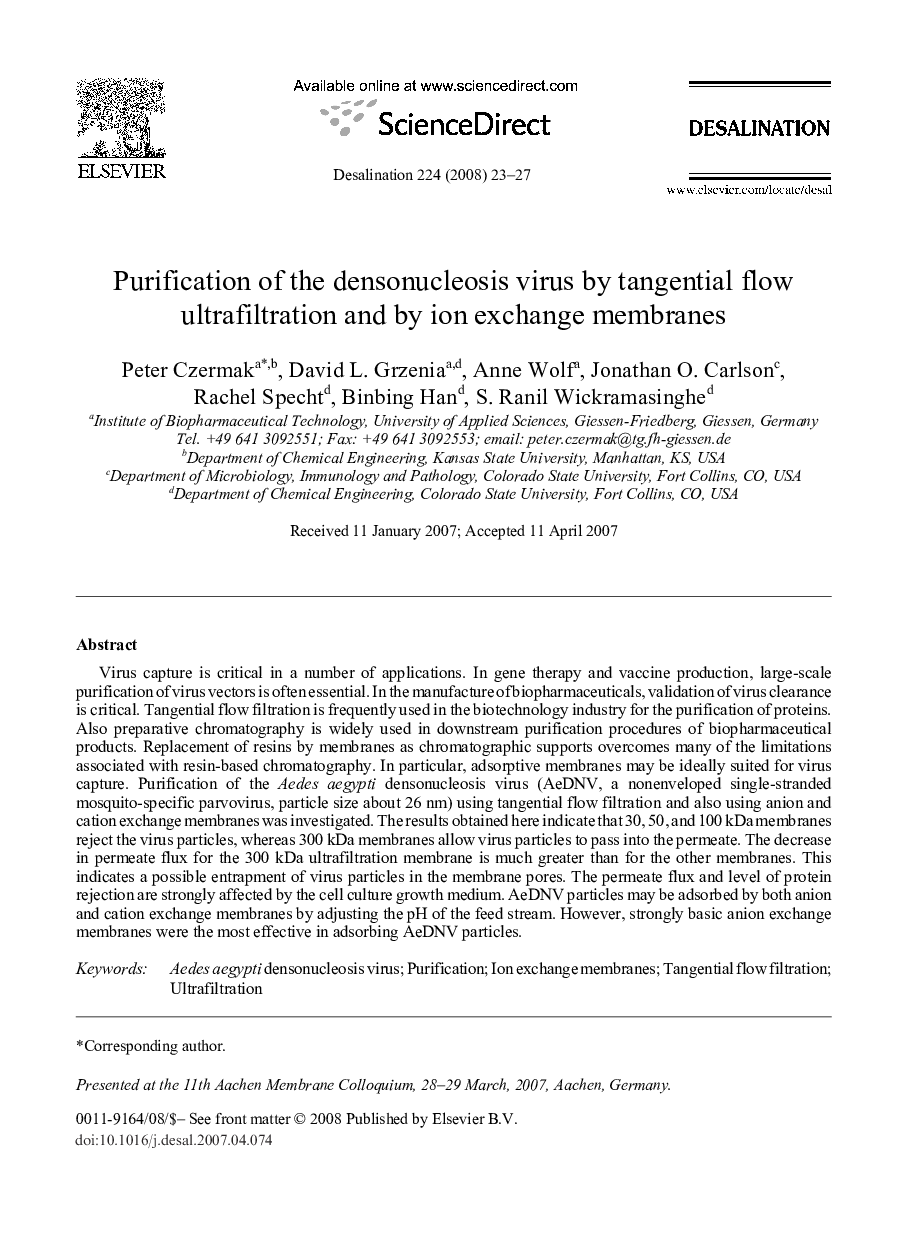| Article ID | Journal | Published Year | Pages | File Type |
|---|---|---|---|---|
| 627730 | Desalination | 2008 | 5 Pages |
Virus capture is critical in a number of applications. In gene therapy and vaccine production, large-scale purification of virus vectors is often essential. In the manufacture of biopharmaceuticals, validation of virus clearance is critical. Tangential flow filtration is frequently used in the biotechnology industry for the purification of proteins. Also preparative chromatography is widely used in downstream purification procedures of biopharmaceutical products. Replacement of resins by membranes as chromatographic supports overcomes many of the limitations associated with resin-based chromatography. In particular, adsorptive membranes may be ideally suited for virus capture. Purification of the Aedes aegypti densonucleosis virus (AeDNV, a nonenveloped single-stranded mosquito-specific parvovirus, particle size about 26 nm) using tangential flow filtration and also using anion and cation exchange membranes was investigated. The results obtained here indicate that 30, 50, and 100 kDa membranes reject the virus particles, whereas 300 kDa membranes allow virus particles to pass into the permeate. The decrease in permeate flux for the 300 kDa ultrafiltration membrane is much greater than for the other membranes. This indicates a possible entrapment of virus particles in the membrane pores. The permeate flux and level of protein rejection are strongly affected by the cell culture growth medium. AeDNV particles may be adsorbed by both anion and cation exchange membranes by adjusting the pH of the feed stream. However, strongly basic anion exchange membranes were the most effective in adsorbing AeDNV particles.
